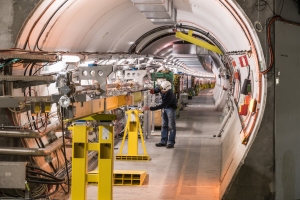Fusion Energy:
Every day our needs of energy increasing where our daily life is based on technology that powered by electricity. Fossil fuels influence climate change rapidly and also had limited sources. Scientist tried to reproduce small suns on the earth as a sustainable energy source, safe and environmental with available fuel in the water and earth crest. Fusion can’t happen without plasma state in temperature 150 million degrees, so the research around the world tries to understand the plasma behaviour in the case to control the fusion in one of two dominant type of devices TOKAMAK and Stellarator.
1- JET:

JET is the initials of the Joint European Torus and the largest Tokamak in operation now since 1983. Located near Oxford shore, UK at the Culham Center for Fusion Energy. The only machine allowed to fuel by Deuterium-Tritium mix fuel since 1991 and produced around 16 Megawatt energy in 1997. The European Fusion Programme is led by JET. For more information look here.
2- ITER:
 Is the largest machine in TOKAMAK type in the world under construction in Cadarache in the south of France. 7 members and 35 countries cooperate to build European Union, Japan, USA, Korea, India, Russia and China with cost. It planned to first plasma discharge in 2025 and the first tritium plasma in 2035. It aims to investigate our understanding of 100 years research in magnetic confinement fusion. more details here
Is the largest machine in TOKAMAK type in the world under construction in Cadarache in the south of France. 7 members and 35 countries cooperate to build European Union, Japan, USA, Korea, India, Russia and China with cost. It planned to first plasma discharge in 2025 and the first tritium plasma in 2035. It aims to investigate our understanding of 100 years research in magnetic confinement fusion. more details here
3- W7-X:
Wendelstein 7-X is the largest Stellarator in the world located at Greifswald in the north of Germany. It enters the operation in 2015 to examine the stellarator modular design concept and has many aims in research in stellarator direction under the coordination of Max-Planck Institute of Plasma Physics.
Nice video for construction: (here)
Visit the machine in 3D as panorama (here)
Plasma accelerators:
In 1889 J. J. Thomson discovered the electron in the discharge tube using an electric field to accelerate and magnetic field to control the path of the unknown particle at this time. Since this time acceleration concept become one of the main scientific tools to discovers the subatomic world. Later on, Debroglie duality for particle and wave was base for the electron microscopy and that accelerated for high energy to get low wavelength and high spatial resolution. In 1932 more questions raised to understand the force that keeps the neutrons and positive protons in the small size of the attoMeter range against the coulomb force. So, many accelerators had been build for scientific research and nowadays for treatments and radiotherapy devices. The accelerator efficiency is limited so for higher energy we need very long paths in kilometre ranges where the gradient of the magnetic field is limited in ordinary ways.
Recently, the plasma wakefield can be generated by injection of a laser beam or particles beam to the plasma. It creates an electric field with a high gradient that can accelerate the charged particle high efficiency. Simply the
1- AWAKE experiment @CERN: 
- Virtual tour (Visit from here)
- Video on TEDx (Watch from here)
by Edda Gschwendtner (Director of the experiment)
